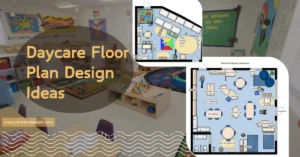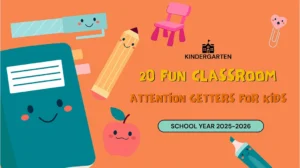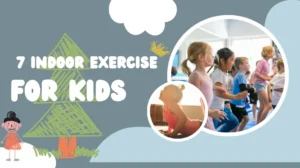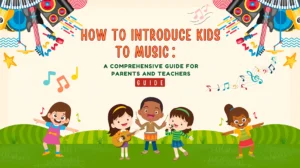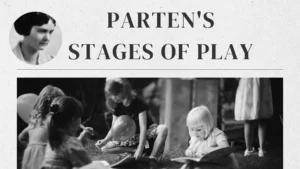In a world where education shapes futures, Montessori classroom areas offer a unique, child-centered approach. These classrooms are more than just educational spaces; they are a foundation for lifelong learning and growth.
Montessori classrooms are divided into five key areas: The Language Area, The Sensorial Area, The Math Area, The Cultural Area, and The Practical Life Area. Each area is meticulously crafted to cater to specific developmental stages, offering a harmonious blend of practical and academic skills tailored to young learners.
As we explore these areas, you’ll discover how each contributes uniquely to a child’s holistic development, nurturing their innate potential in a structured yet flexible learning environment.
The layout of a Montessori classroom is not random or accidental. Classroom objects are intentionally placed in different areas that correspond to the five curriculum areas that will be discussed in the classroom. View the five areas in a Montessori classroom.
1. Montessori Classroom Areas of Language

In the Language Area, children embark on their journey of literacy. This area is rich with materials that support the development of reading and writing skills from a very young age. Activities include learning phonetic sounds, forming words with movable alphabets, and eventually, advancing to reading fluently and creative writing. The Language Area is integral in fostering effective communication skills and laying a foundation for effective expression and comprehension.
Additionally, the Language Area embraces diversity by introducing children to different languages and cultures, enhancing global awareness and empathy. This exposure not only broadens their linguistic abilities but also their cultural understanding.
What Constitutes the Montessori Language Area?
The Montessori Language Area is a rich and inviting space filled with materials such as sandpaper letters, moveable letters, and various language games. These tools have been carefully designed to provide children with tactile, visual and auditory learning experiences. The area is structured to accommodate different learning rhythms and styles, from simple to complex tasks. Ensuring every child can find something at their level encourages self-paced learning and fosters a sense of achievement.
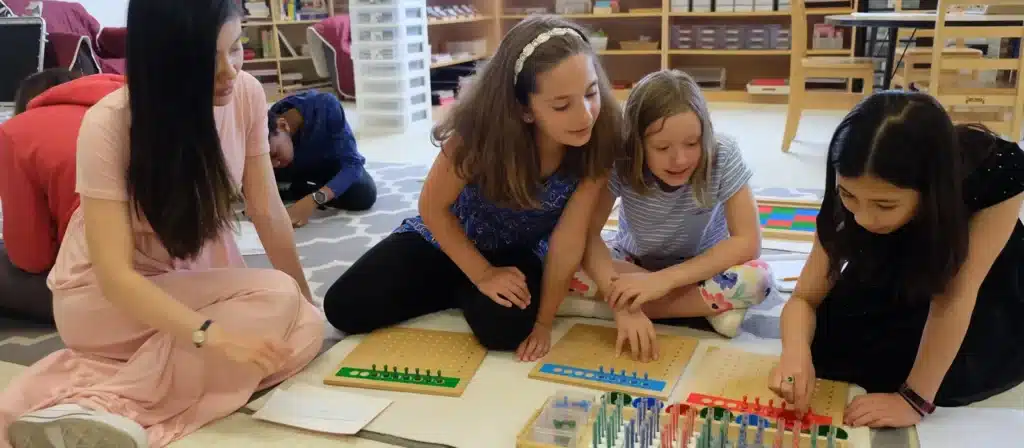
How Does the Language Area Support Cognitive Development?
In a Montessori classroom, the language area is about more than just learning to read and write; it’s about developing critical thinking and problem-solving skills. Activities such as matching games, sequencing, and storytelling exercises stimulate cognitive processes such as memory, attention, and reasoning. These activities are key to developing a child’s ability to process information, understand concepts, and express themselves clearly and creatively.
The Role of Phonics in the Montessori Language Area
Phonics is a fundamental component of the Montessori Language Area. Unlike traditional rote memorization of words, phonics in Montessori education focuses on the sounds that letters and letter combinations make. This method promotes a deeper understanding of the language and aids in developing reading and spelling skills. The hands-on approach with materials like sandpaper letters allows children to feel the shape of the letters while they learn the sounds, creating a multisensory learning experience.
2. The Sensorial Area
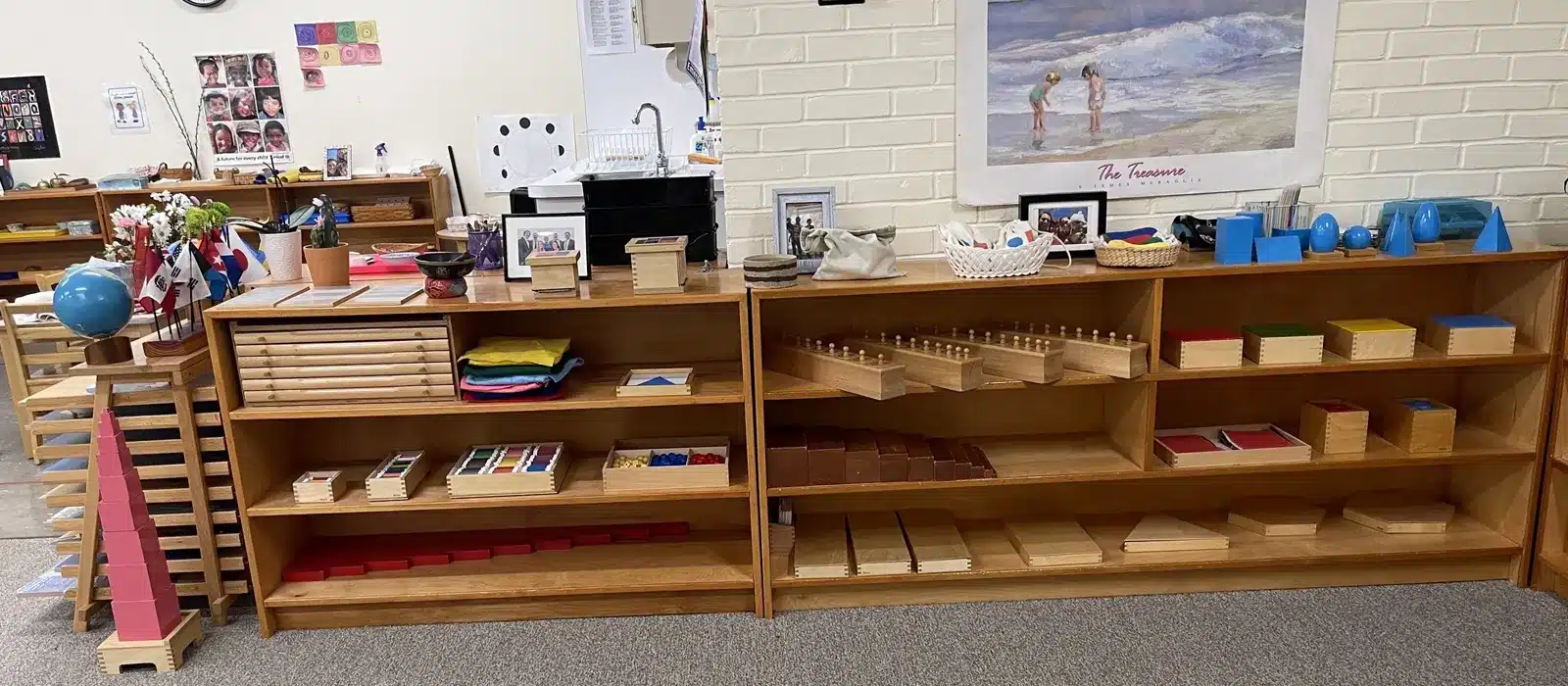
The Sensorial Area is an essential component of Montessori education. It features unique materials that isolate sensory properties such as color, shape, texture, sound, and weight. These materials are not just playthings; they are tools that guide children in making sensory discoveries. Children learn to classify, compare, and contrast the world by engaging with these materials and developing critical thinking and analytical skills.
The Role of Sensorial Materials in Developing Fine Motor Skills
Sensorial materials are meticulously designed to support the development of fine motor skills. Transferring objects with tweezers or tracing geometric shapes helps strengthen hand-eye coordination and dexterity. This development is crucial not only for academic tasks like writing but also for everyday life skills.
Fostering Language Development Through Sensory Experiences
The sensory area also contributes significantly to language development. As children describe their sensory experiences, they expand their vocabulary and develop descriptive language skills. This verbal expression of sensory experiences helps bridge the gap between the concrete and the abstract, facilitating deeper understanding and communication.
3. The Math Area
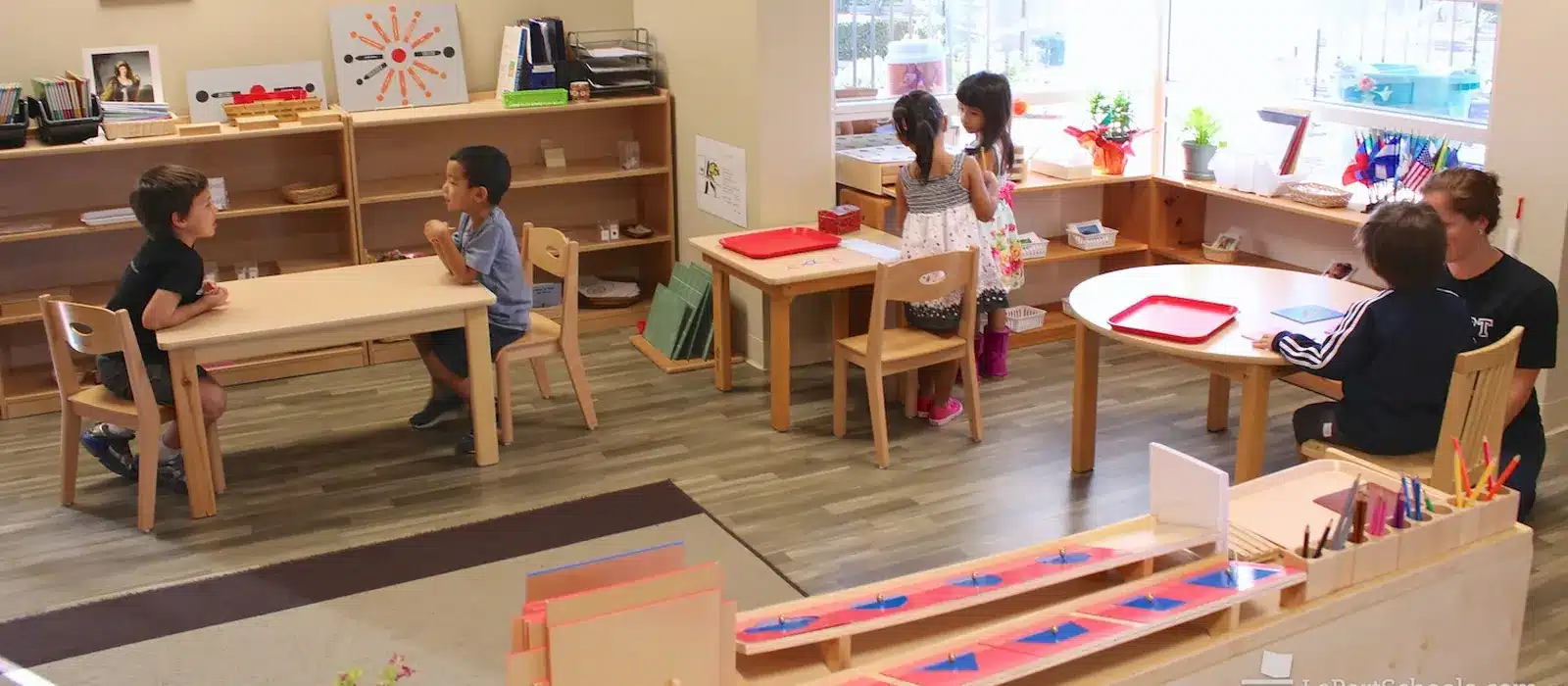
The Math Area is where abstract concepts become tangible realities. Montessori materials like bead chains, spindle boxes, and geometric solids introduce children to the world of numbers and shapes in a hands-on, engaging manner. These tools help children understand and internalize fundamental math concepts such as counting, addition, subtraction, multiplication, and division.
The Role of Montessori Materials in Understanding Mathematical Concepts
In the Math Area, each Montessori material serves a specific purpose in teaching mathematical concepts. The materials are designed to be self-correcting, encouraging children to explore and learn through trial and error without fear of making mistakes. For instance, the Golden Beads introduce the decimal system in a very tactile and visual way, helping children to comprehend complex ideas like place value and the operations of addition, subtraction, multiplication, and division.
4. The Cultural Area
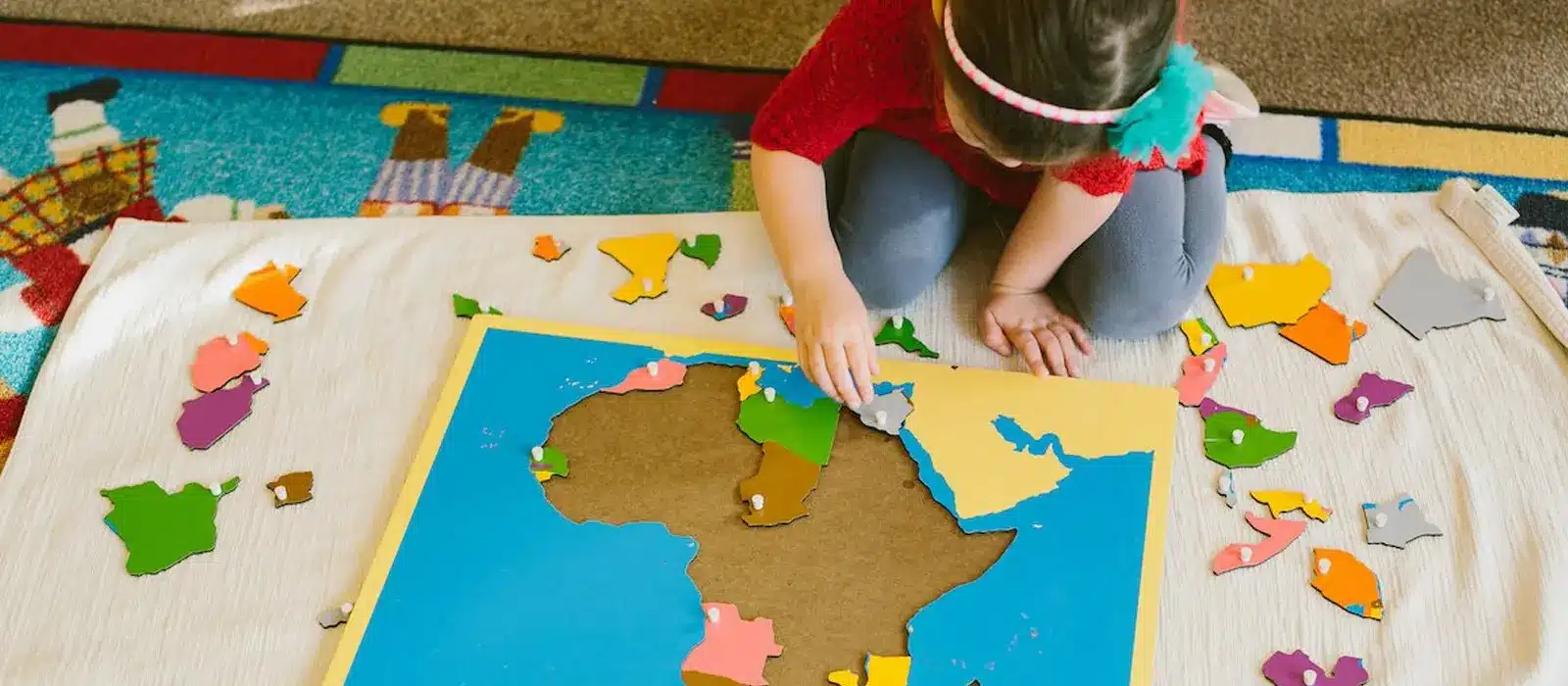
The Cultural Area is a lively tapestry of human experience and natural phenomena. It encompasses geography, history, science, and the arts, presenting them not in isolation but as interconnected aspects of our world. It is a place where children learn about different countries, cultures, and ecosystems, allowing them to explore their curiosity about different ideas.
The Role of Hands-On Materials in Exploring Geography and Science
Hands-on materials such as puzzle maps, flags, and models of landforms play a significant role in the Cultural Area. These materials help children understand geographical concepts and the diversity of ecosystems. Similarly, science materials enable children to explore botany, zoology, and basic physical laws, fostering a love for the natural world and scientific inquiry.
5. The Practical Life Area
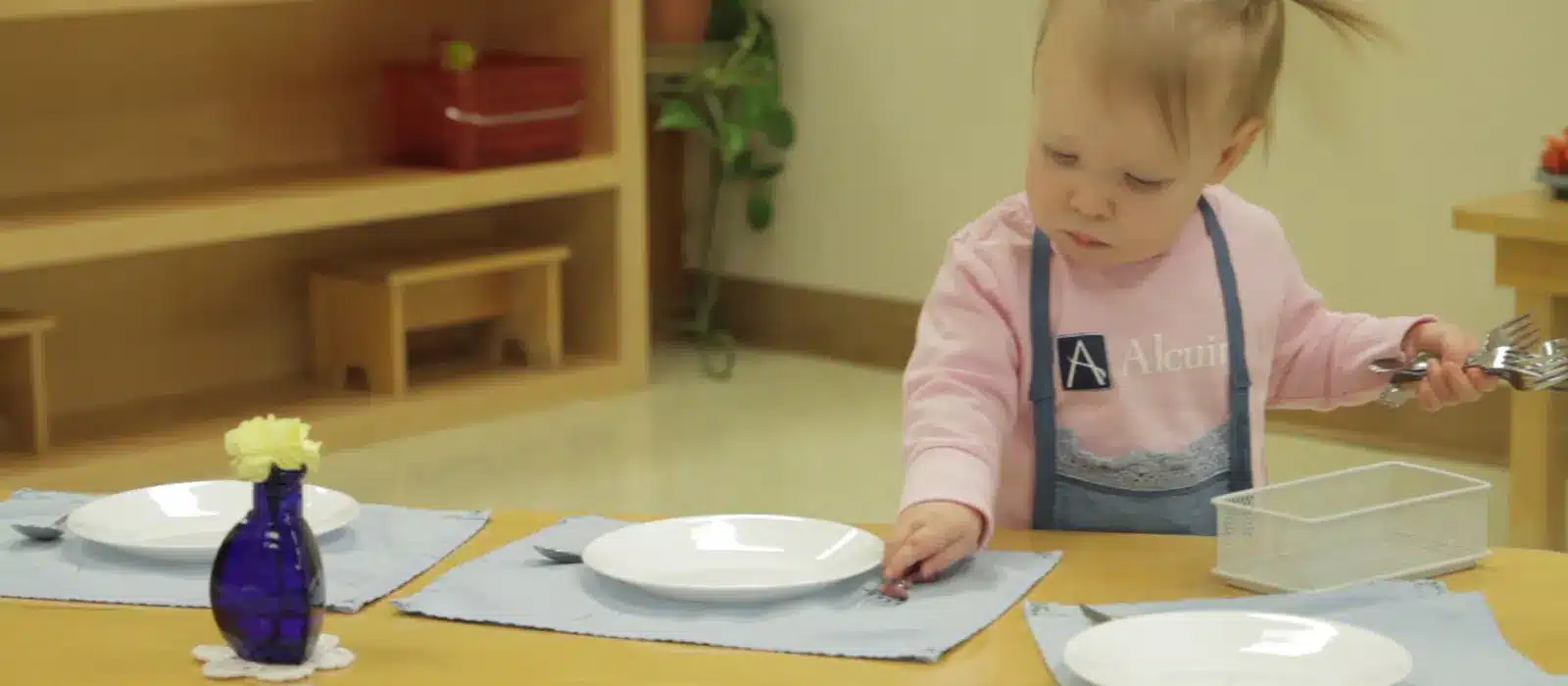
Arguably the foundation of Montessori education, the Practical Life Area is where children develop life skills and a sense of independence. Activities range from basic self-care to complex tasks like cooking and gardening. These exercises teach practical abilities and enhance fine motor skills, concentration, and a sense of responsibility.
You may see children dressing themselves and cleaning up after themselves. The classroom may have child-sized tables, chairs, and even cutlery for the children to eat independently.
Fostering Independence and Self-Confidence
The Practical Life Area empowers children to perform tasks independently, crucial for building self-confidence and self-esteem. When children complete tasks on their own, they feel capable. This sense of achievement motivates them to take on new challenges and fosters a love for learning.
Conclusion
Each Montessori classroom area plays a pivotal role in nurturing children’s development. Together, they create a learning environment that honors individuality and ignites curiosity. At Saiha Montessori, we understand the importance of these areas and offer high-quality, customizable furniture and materials to support this educational model.



